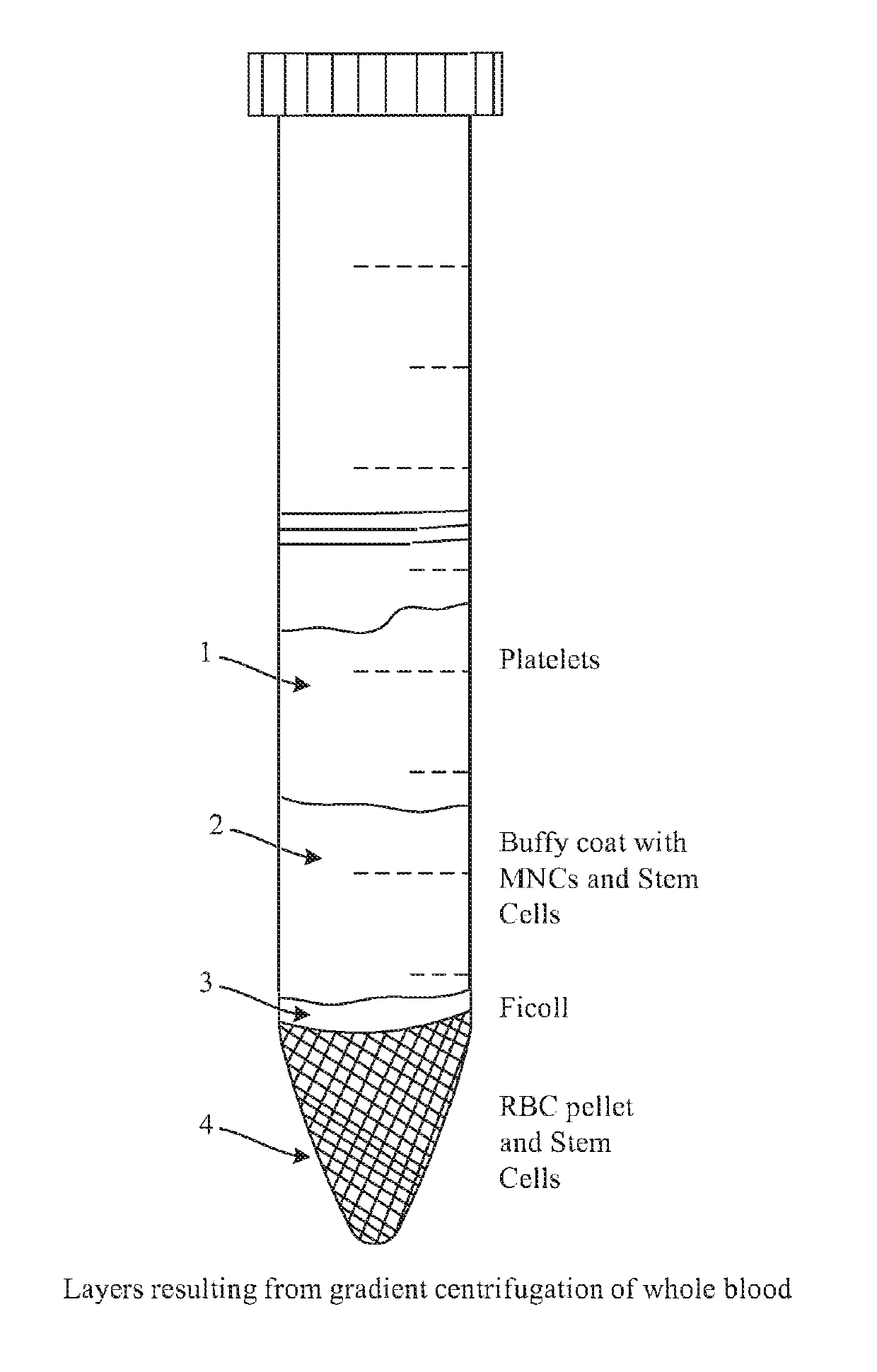Compositions and methods to inhibit stem cell and progenitor cell binding to lymphoid tissue and for regenerating germinal centers in lymphatic tissues
a technology of progenitor cells and stem cells, applied in the direction of biocide, peptides, skeletal/connective tissue cells, etc., can solve the problems of sepsis, splenectomy is also associated with surgical mortality, stem cells are not well retained in the organ targeted for tissue regeneration, etc., to enhance the bioavailability of spontaneously released endogenous stem cells, extensive plasticity and multipotency, and the effect of expanding hematopoiesis
- Summary
- Abstract
- Description
- Claims
- Application Information
AI Technical Summary
Benefits of technology
Problems solved by technology
Method used
Image
Examples
example 1
[0235]Stem Cell Enriched Bone Marrow and Whole Blood Mononuclear Fractions Bind to B Cell Regions at the Edges of the White Pulp of the Spleen when Administered to an Allogeniec Mouse
[0236]Bone marrow and whole blood mononuclear cell fractions from a male 129S1 / SvlmJ mouse were isolated using Histopaque and combined. The cells were incubated at 37.degree. C., 5% CO2 for 4 days to allow differentiated somatic cells to die off, thereby concentrating the stem cell fraction among the mononuclear cells. The resulting cells were then labeled with cell tracker orange (CTO Invitrogen) according to the manufacturer's instructions. Approximately 10 million labeled cells were administered by retro-orbital injection to a recipient litter mate, and 90 minutes later the mouse was exsanguinated and blood collected, the vasculature flushed of residual red blood cells, and the spleen harvested. The spleen was fixed overnight in 1% PFA and then embedded in low melting, low gelling temperature agarose...
example 2
[0238]CD34+, CD105+ and CD117+ Purified Stem Cells Bind to the Same Splenic Region as the Labeled MNC Stem Cell Containing Fractions.
[0239]Bone marrow and whole blood mononuclear cell fractions from a male mouse were isolated using Histopaque and combined. MNC cells labeled with cell tracker green (CTG, Invitrogen) were then incubated with biotin-labeled antibodies to CD34, ckit and CD 105 and purified using Miltenyi magnetic separation columns according to the manufacturer's recommendations. A portion of the isolated MNC were labeled separately with CTO. One million CTO-labeled MNC were co-incubated with 205,000 CTG labeled purified stem cells on 100-200 micron thick fresh spleen sections for 12-18 hours at 4.degree. C. The spleen sections were thoroughly washed to remove unbound cells, fixed for one hour in 1% PFA and then wet mounted for fluorescent imaging. MetaMorph software was used to capture and overlay the resulting red (MNC) and green (stem cell) binding.
[0240]Results and ...
example 3
[0241]Bone Marrow and Whole Blood Mononuclear Fraction Stem Cells Bind to the PNA Positive Areas in the Germinal Centers of the Spleen
[0242]Bone marrow and whole blood mononuclear cells (MNC) are isolated from adult mice using Histopaque. The resulting mononuclear cells are stained with cell tracking dyes such as CellTracker Orange, Green or Blue, Dil, or Calcein Orange or Blue according to manufacturer's recommendations. FITC-labeled PNA (10 ugs), IgD (10 .mu.gs) or anti-CD21 (10 .mu.gs) are used to identify specific B cell regions in the white pulp of the spleen. PNA labels germinal centers, IgD labels follicular zones and anti-CD21 labels marginal and mantle zones. FITC-labeled anti-CD3 (200 ng to 1 .mu.g) is used to identify T cell regions in the white pulp of the spleen. After thorough washing the bound cells and antibodies are fixed on the spleen sections using 1% PFA for 1 hour at 4.degree. C. Wet mount sections are viewed for fluorescence and pictures taken using MetaMorph s...
PUM
| Property | Measurement | Unit |
|---|---|---|
| Time | aaaaa | aaaaa |
| Time | aaaaa | aaaaa |
| Dimensionless property | aaaaa | aaaaa |
Abstract
Description
Claims
Application Information
 Login to View More
Login to View More - R&D
- Intellectual Property
- Life Sciences
- Materials
- Tech Scout
- Unparalleled Data Quality
- Higher Quality Content
- 60% Fewer Hallucinations
Browse by: Latest US Patents, China's latest patents, Technical Efficacy Thesaurus, Application Domain, Technology Topic, Popular Technical Reports.
© 2025 PatSnap. All rights reserved.Legal|Privacy policy|Modern Slavery Act Transparency Statement|Sitemap|About US| Contact US: help@patsnap.com

